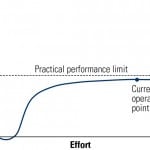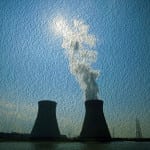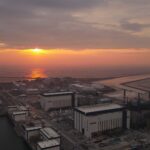The impact of COVID-19 has placed a sharp focus on the importance of not only keeping key personnel safe but also how to better manage risk with fewer resources on site. One unexpected result is the acceleration of interest in digitisation initiatives. Ten years of digital innovation has brought new ways of modelling and managing risk, and new solutions have been brought to market that are allowing for the safe operation of nuclear power plants.
After the Fukushima nuclear disaster of March 2011, many new nuclear programmes were delayed or significantly repealed. Governments globally, and particularly those in Western Europe, instigated broad-brush policy changes while also conducting substantial safety reviews and nuclear power plant modifications. As a result, the expected construction of new generation fell. China, which felt the fallout of the disaster quite acutely, halted the approval of all new nuclear power plants for several years while new safety standards were put in place.
Industry was also thorough in its response—the World Association of Nuclear Operators has initiated the roll-out of 12 projects, which saw 460 commercial power stations complete approximately 6,000 safety enhancement activities. As well as improving the overall margin of nuclear safety, the projects created new insights for managers across functions.
While the clean-up at Fukushima continues, new nuclear programmes are progressing seemingly unhalted by COVID-19. Indeed, according to a recent report in Reuters, the virus has had no impact on the construction of China’s 15 new sites in the short term, according to a China Ministry of Ecology and Environment spokesperson. By 2040, $1.1 trillion of new nuclear plants are forecast to be built, and China and India will account for 93% of the net production increase. Should China realise its medium-term targets, it will overtake the U.S. in terms of nuclear capacity by 2030.
Under such unusual circumstances, safety remains paramount, but this new tranche of nuclear generation also represents an opportunity—an opportunity to bring about an enhanced image of nuclear safety. The digitalisation of much of today’s energy industry is one aspect that has created widespread change in the way that the industry addresses risk.
It’s a vision that China appears to have embodied. In its nuclear whitepaper, released in September 2019, it outlined that to achieve greater progress and better utilisation of nuclear energy it must first “respond to the challenges it poses and ensure nuclear safety.” Of particular note is China’s approach to risk prevention: “A risk-informed and problem-oriented review system has been established, and efforts are being made to enhance the capacity of independent verification and calculations, probabilistic safety assessment, and risk assessment.”
This area in particular is where technological innovation can lend a helping hand. Gaining insight, and indeed sharing and integrating lessons to reduce risk, has become much more straightforward compared to 10, five, or even two years ago.
The digitalisation of plant designs is one area of risk assessment that can now be completed automatically. The latest technologies consider more than just schematics and equations, much to the benefit of this new era of nuclear. For example, Lloyd’s Register’s digital platforms encapsulate a deep sector knowledge that can only be gained through a great number of years of nuclear operation experience. But more than that, this data can be combined with international best practices, site-specific data, and even an engineer’s own experience too. Combined together, these layers of data unlock an unprecedented level of insight and analysis. This replaces the many analyst hours, even days, it would have taken on previous builds to handmake fault trees, run simulations, etc.
Digital technologies also benefit the industry by dissipating some of the mystique behind risk assessment. For many years, risk assessment required a high level of abstraction and an elite team of analysts fully immersed in the ways of every single component and their failure profiles. A heady task for any risk analyst, but one made doubly hard by the exacting requirements of nuclear. Instead, the digitalisation of the process has encapsulated this innate knowledge and granted the everyday engineer access to its insights. You no longer need to be a mathematical genius to run a reliability or risk analysis.
If there’s an element of industry reservation, you only have to look at the introduction of autopilot to remember that it is a much more common practice than one might initially think. Further, it is these types of systems that can only get better with time, as more data is inputted. Digitalisation allows for the same level of tailoring by a nuclear site, while benefiting from an innate knowledge gained by having visibility of all other sites it is deployed upon. When it comes to managing fleets, sharing data improves competence by establishing consistent risk modelling throughout.
Similarly, it is not just new nuclear that stands to benefit, but aging plants too. By their very nature, risk profiles morph over time, but the digitalisation of data allows for risk managers to run more-accurate simulations and better dynamic modelling for existing assets too. In fact, model-based risk analysis software that supports this approach is already used in many existing nuclear sites in France.
With digitalisation, the future of nuclear does not need to look like the past. New platforms mean ever enhancing safety and risk assessment standards and practices at every step, from design through decommissioning. Indeed, the latest innovations bring to market a new generation of tools—tools so customisable that they are, in essence, tools to make tools. As with many digital innovations, platforms like these make available a depth of analysis that was simply not humanly possible before.
In a period of significant uncertainty, where the industry has had to rapidly adopt special measures to ensure continuous operation, a greater handle on risk has never been more welcome. After the crisis, it may even be true to say that the industry will be even better prepared and more confident in allowing digital innovation to elevate safety standards.
—Ola Bäckström is Product Manager Risk—Digital Products, at Lloyd’s Register.










